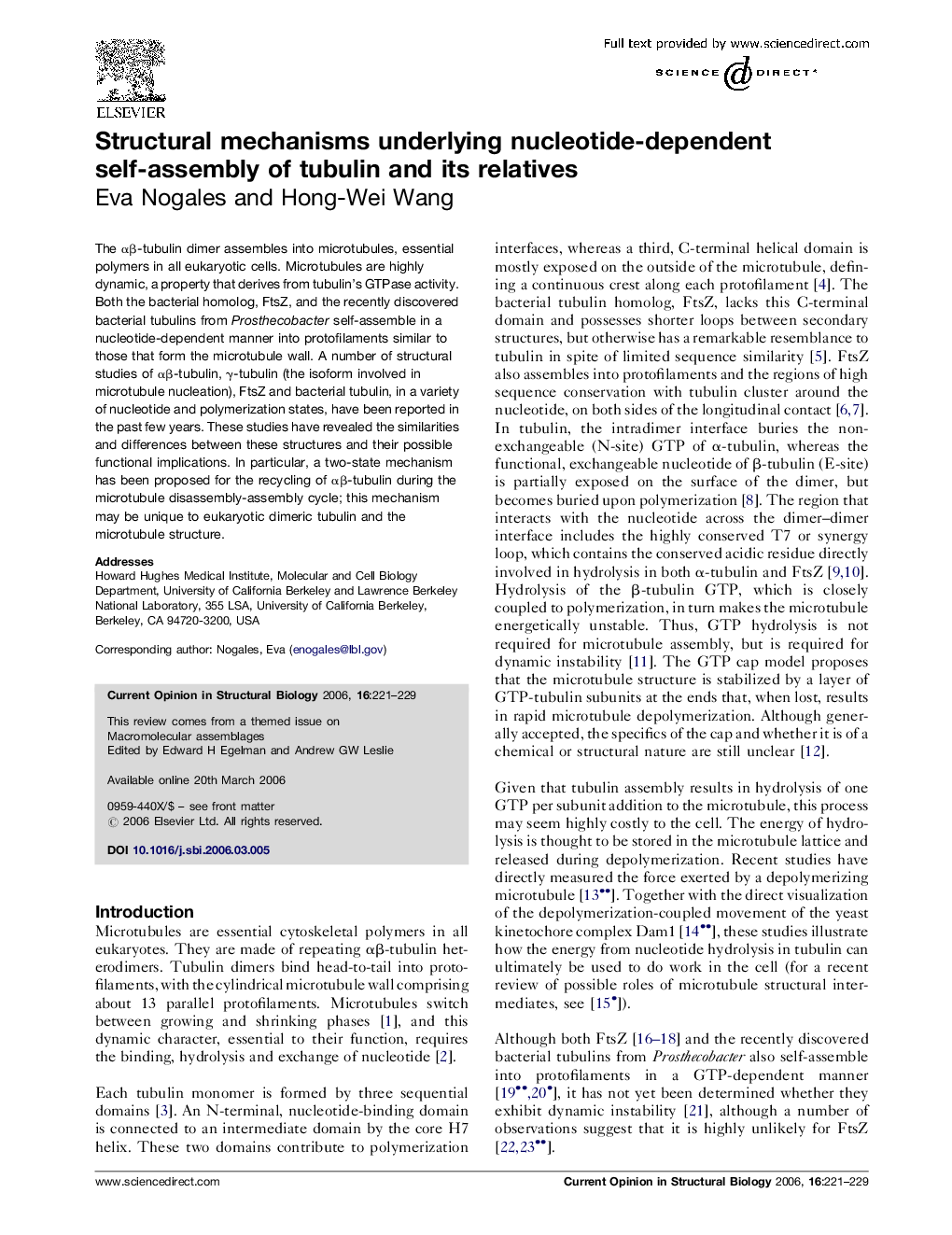| Article ID | Journal | Published Year | Pages | File Type |
|---|---|---|---|---|
| 1979929 | Current Opinion in Structural Biology | 2006 | 9 Pages |
The αβ-tubulin dimer assembles into microtubules, essential polymers in all eukaryotic cells. Microtubules are highly dynamic, a property that derives from tubulin's GTPase activity. Both the bacterial homolog, FtsZ, and the recently discovered bacterial tubulins from Prosthecobacter self-assemble in a nucleotide-dependent manner into protofilaments similar to those that form the microtubule wall. A number of structural studies of αβ-tubulin, γ-tubulin (the isoform involved in microtubule nucleation), FtsZ and bacterial tubulin, in a variety of nucleotide and polymerization states, have been reported in the past few years. These studies have revealed the similarities and differences between these structures and their possible functional implications. In particular, a two-state mechanism has been proposed for the recycling of αβ-tubulin during the microtubule disassembly-assembly cycle; this mechanism may be unique to eukaryotic dimeric tubulin and the microtubule structure.
